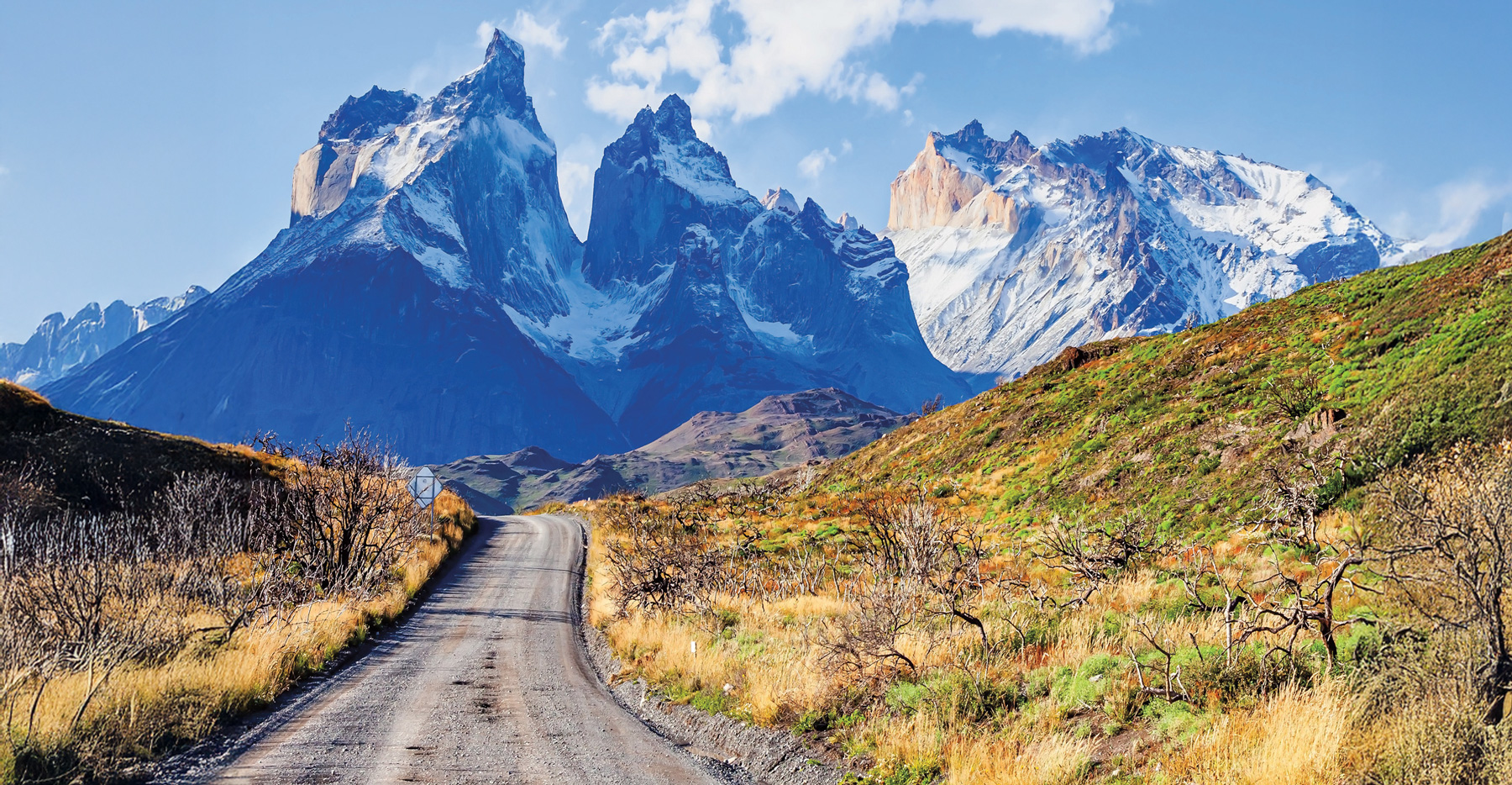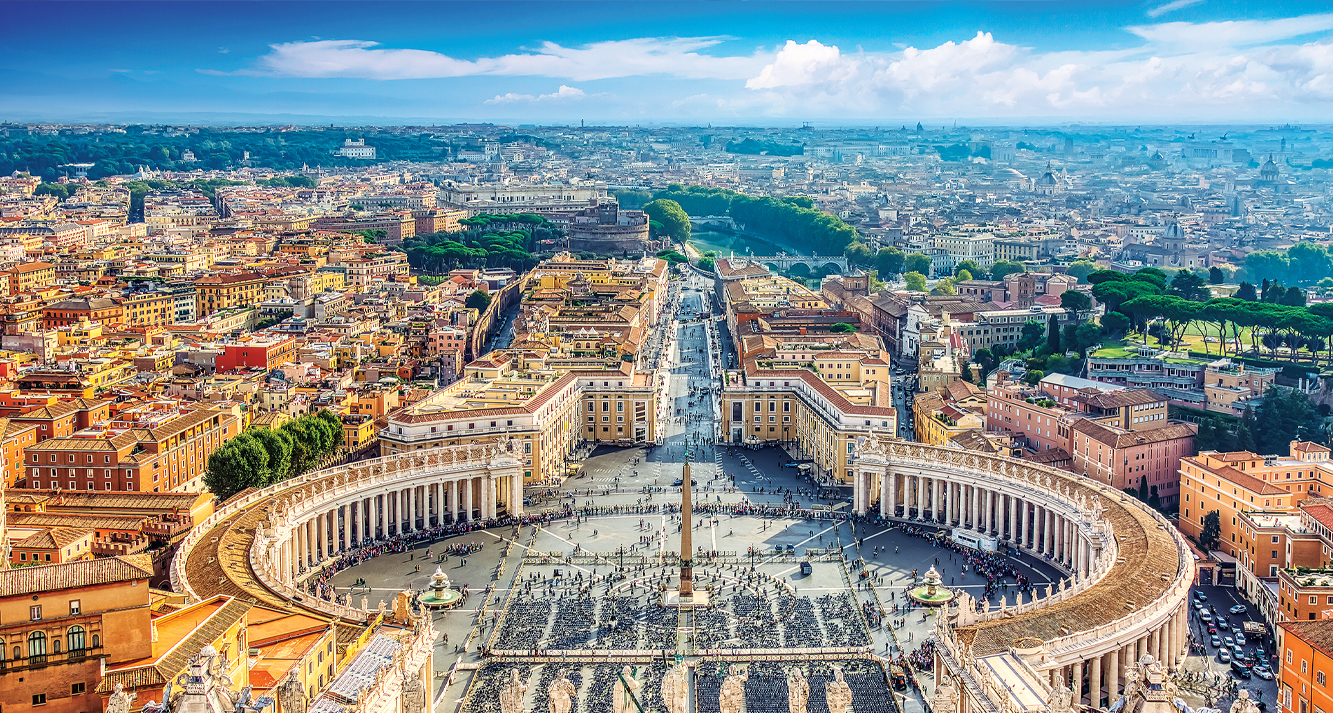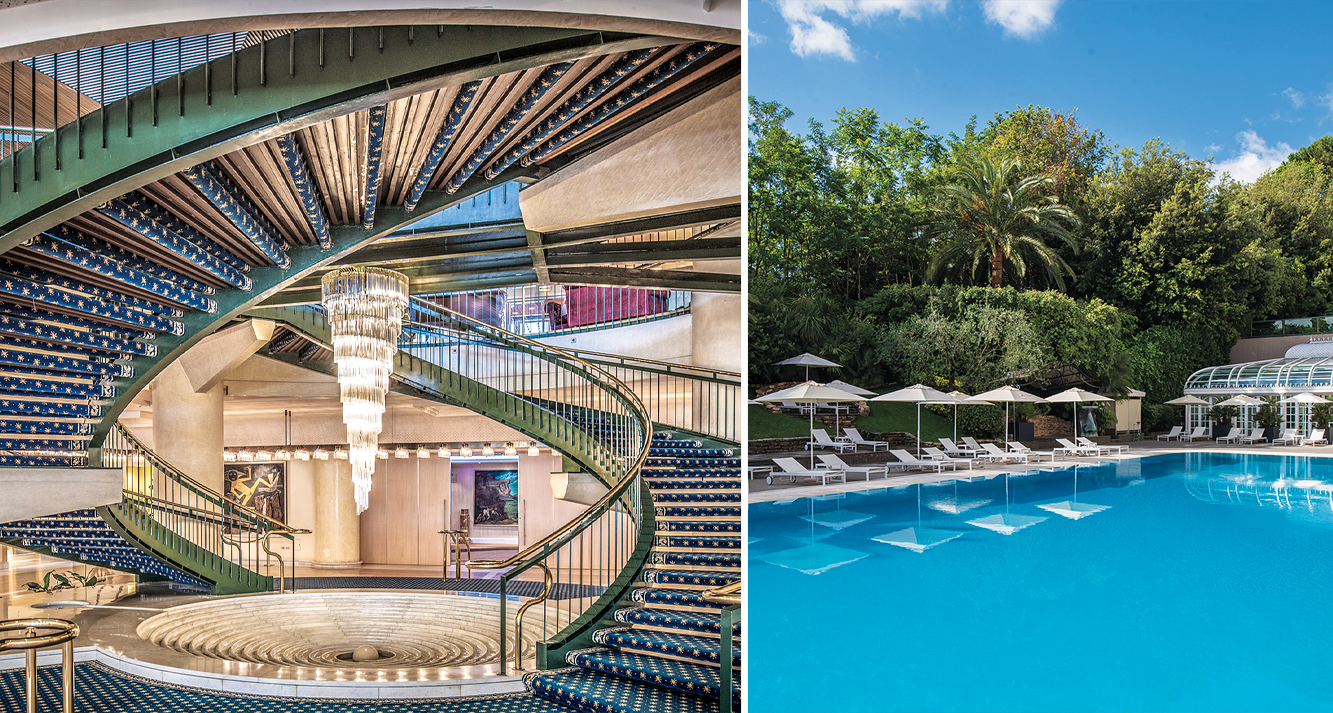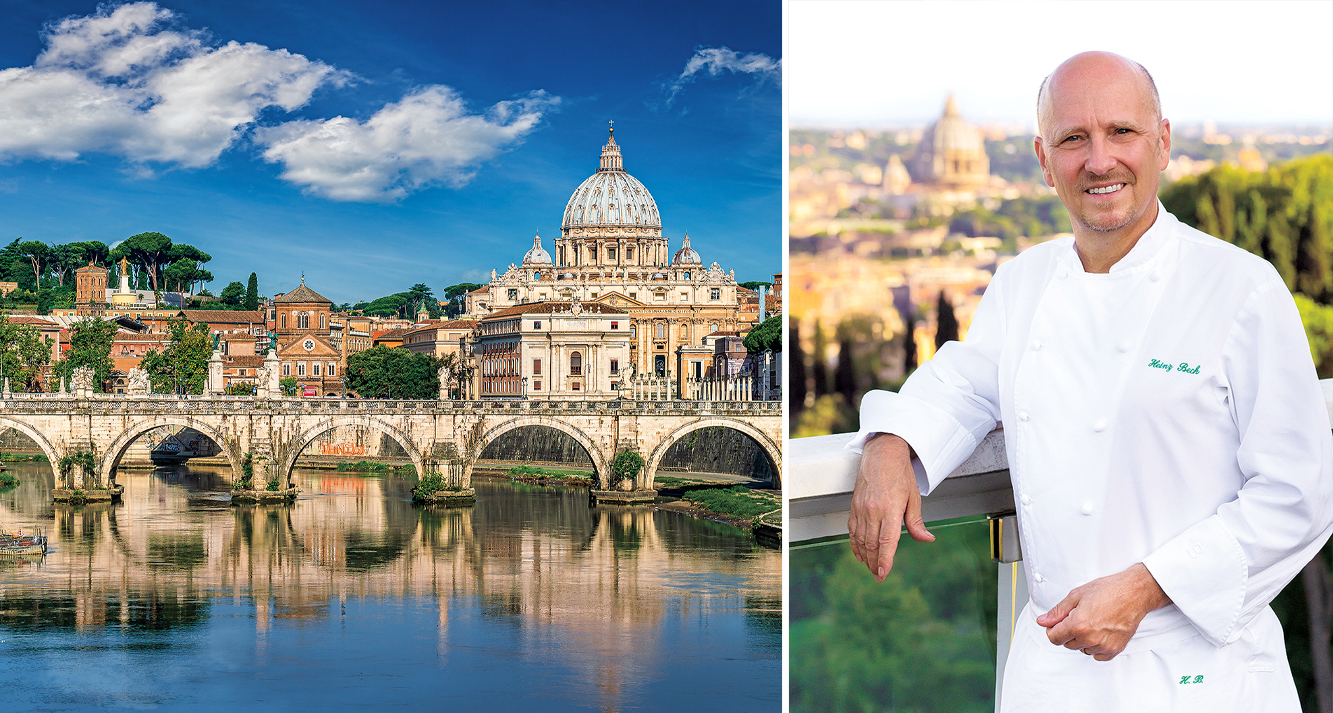
All roads lead to Rome” was an accurate adage in its day, for the simple reason that in ancient times all roads began in Rome. Many of these early thoroughfares started at Piazza del Campidoglio, which basks in immaculate glory at the top of Capitoline Hill, the most central of the seven hills upon which ancient Rome was built.

Today, in describing the proximity of Marco Simone Golf & Country Club—the 2023 Ryder Cup venue—to the center of Rome, the club’s business development manager, Riccardo Tirotti, says it is “only 17 kilometers from Piazza del Campidoglio.” Indeed, Roman roads may have multiplied and modernized over the centuries, but Piazza del Campidoglio remains core to Roman hearts and minds.
The piazza’s current form—with geometric paving surrounding a statue of Emperor Marcus Aurelius on horseback—was the creation of Michelangelo in the 16th century. The Renaissance master also designed the Palazzo dei Conservatori to one side and the Palazzo Nuovo on the other, which today house the Capitoline Museums—the world’s oldest museums. Piazza del Campidoglio is also within easy walking distance of the Colosseum, the Trevi Fountain, Circus Maximus and many other attractions, making it, as in ancient times, an ideal starting point.

Modern travelers, of course, also need an ideal ending point, a peaceful place to retire at the conclusion of a day exploring Rome. As one of the most popular destinations on Earth, the city does not lack for luxury hotels, but few combine centrality and tranquility quite like the Rome Cavalieri (which, perhaps not coincidentally, is the official hotel of this year’s Ryder Cup).
Set high above the city center in the leafy neighborhood of Monte Mario, the Cavalieri sits close to the action—close enough that from the balconies of the higher floors, guests can almost peer over the 40-foot walls of the Vatican City (which is in fact one mile away). The 15-acre grounds of the Cavalieri, which is part of the Waldorf Astoria hotel group, are a haven of manicured gardens and verdant lawns dotted with Roman sculptures. This—combined with a 25-meter-long pool and five-star spa—is just what you need after a day trying to appreciate the scale and layers of the Eternal City’s more than 2,000-year history.
Further reflection can be found over cocktails in the sumptuously furnished Tiepolo Lounge, where three of the 18th-century Venetian artist Giambattista Tiepolo’s original paintings adorn the walls and neighboring reception area. The paintings set the tone for the entire hotel, which is home to one of the world’s most extensive private art and antique collections. One suite has an Andy Warhol painting, in another you can sit at Napoleon Bonaparte’s desk, and next door are Karl Lagerfeld’s giant, custom-made velvet sofas. By the elevators, in glass cabinets, are ballet costumes worn by Rudolf Nureyev.
One suite has an andy warhol painting, in another you can sit at napoleon bonaparte’s desk.
If all this puts you in the mood for shopping, you must do as the Romans do. As with all big cities, the trashiest stores and restaurants thrive around the most popular attractions. Outside the austere stone walls of the Vatican, black-market vendors trade in fake designer bags and purses; around the corner are a McDonald’s, an “Irish pub” and an inordinate trail of identical souvenir stalls and shops.
Rome, however, is not a sprawling metropolis, and from the visitor hotspots of the Vatican, the Colosseum and their ancient cousins, it is just a short walk to break free from the tourist mainstream. In neighborhoods such as Monti, the mass-market chains are replaced by small, independent stores, bars and restaurants. Though ramshackle in places, rough around the edges, Monti is the real, contemporary Rome. Head down Via Urbana, Via dei Capocci or Via dei Serpenti and arrive at Piazza della Madonna dei Monti, where you’ll find pasta, cappuccino, gelato, the electric orange fizz of an Aperol spritz—all the things you associate with a Roman holiday, aside from the tourist crowds.
For the full flavors, aromas and sounds of Roman life, follow your nose south out of Piazza del Campidoglio and walk the eastern flank of the River Tiber for a mile until you reach the neighborhood of Testaccio. Four blocks in from the riverside is the renowned Testaccio Market, open every day bar Sunday, where 100 stalls cater to local shoppers and tastes with fresh produce. There are clothing vendors as well, but this is ideal for picking up lunch on the go from one of the variety of takeaway stalls, such as delicious, hot Roman sandwiches from Mordi e Vai.

Food, of course, is always something to celebrate in Rome, from the simple trattoria to the Michelin-starred fine-dining room. The Cavalieri is home to the ultimate example of the latter, existing in understated grandeur on the hotel’s top, ninth floor. La Pergola, from German chef Heinz Beck, is in fact Rome’s only Michelin three-star restaurant and the only hotel restaurant in Italy to hold three stars.
Frescoed ceilings, artworks dating back to the 18th century and elegant furnishings set the tone for the exquisite restaurant, which opens up to a roof terrace with panoramic views over the city. Opulent table settings revolve around gold-plated silverware, ready to receive dishes created with astonishing intricacy and imagination.
Case in point: chef Beck’s “Fagottelli La Pergola,” which is his interpretation of carbonara. Instead of mixing the spaghetti into a sauce of eggs, pecorino, guanciale and parmesan, Beck encapsulates the sauce within little pasta parcels. It produces “an explosion of warm, rich flavor,” claims Beck—and it absolutely does. “My intention is to transmit emotions through harmoniously balanced aromas, flavors and colors—sensory stimuli which are intertwined and blended in suffused and refined surroundings.”
If that is your intention, Rome seems like the perfect place to start.
Follow Us On


| Cookie | Duration | Description |
|---|---|---|
| cookielawinfo-checkbox-analytics | 11 months | This cookie is set by GDPR Cookie Consent plugin. The cookie is used to store the user consent for the cookies in the category "Analytics". |
| cookielawinfo-checkbox-functional | 11 months | The cookie is set by GDPR cookie consent to record the user consent for the cookies in the category "Functional". |
| cookielawinfo-checkbox-necessary | 11 months | This cookie is set by GDPR Cookie Consent plugin. The cookies is used to store the user consent for the cookies in the category "Necessary". |
| cookielawinfo-checkbox-others | 11 months | This cookie is set by GDPR Cookie Consent plugin. The cookie is used to store the user consent for the cookies in the category "Other. |
| cookielawinfo-checkbox-performance | 11 months | This cookie is set by GDPR Cookie Consent plugin. The cookie is used to store the user consent for the cookies in the category "Performance". |
| viewed_cookie_policy | 11 months | The cookie is set by the GDPR Cookie Consent plugin and is used to store whether or not user has consented to the use of cookies. It does not store any personal data. |